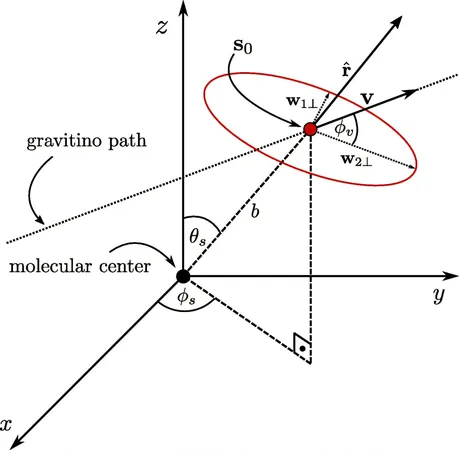
Unlocking the Secrets of the Universe: The Gravitino as a Dark Matter Candidate
2025-09-22
Author: Siti
The Mystery of Dark Matter
Dark matter continues to baffle scientists, remaining one of the greatest enigmas in physics. Despite 40 years of intense research and numerous theoretical models ranging from axions to WIMPs, the true nature of dark matter eludes us.
Enter the Gravitino!
A groundbreaking theory has emerged, proposing superheavy charged gravitinos as fresh candidates for dark matter. Researchers from the University of Warsaw and the Max Planck Institute for Gravitational Physics have published a compelling paper in *Physical Review Research*, revealing that upcoming underground detectors, specifically the JUNO detector, are exceptionally poised to detect these elusive particles, originally designed for neutrino studies.
Theoretical Foundations and Discoveries
In a provocative twist, physicist Murray Gell-Mann, who won the Nobel Prize for his pioneering work on quarks, hinted that the particles within the Standard Model can be derived from a purely mathematical framework known as "N=8 supergravity." This extraordinary model not only includes familiar particles but also incorporates gravitons and gravitinos.
Recent explorations by physicists Krzysztof Meissner and Hermann Nicolai have evolved Gell-Mann's ideas, enabling them to rectify discrepancies in particle charge values within the Standard Model.
A Surprising Outcome: Electrically Charged Gravitinos
Their innovative modifications suggest that gravitinos could possess exceptionally high mass—close to the Planck scale—and intriguing electric charges. Surprisingly, while conventional dark matter candidates like axions and WIMPs are electrically neutral, these charged gravitinos could also serve as viable dark matter candidates due to their immense rarity.
Searching for Gravitinos in New Places
A critical aspect of this research highlights that the charged nature of gravitinos opens new avenues for detection. With next-gen detectors on the horizon, including JUNO—set to start capturing data in 2025—scientists are gearing up to test this hypothesis.
Advanced Simulations Point to Unique Signatures
The team conducted extensive simulations, integrating advanced quantum chemistry and particle physics to analyze potential signatures that the passage of a gravitino through these detectors could produce. These simulations reveal that gravitinos will emit distinctive signals that set them apart from all known particles, paving the way for groundbreaking discoveries.
The Implications of Discovering Gravitinos
Detecting superheavy gravitinos could revolutionize our understanding of fundamental physics, bridging the gap between gravity and quantum mechanics. Such a discovery would provide critical insights into the unification of the forces governing our universe.
Conclusion: The Future of Dark Matter Research
The quest for dark matter, marked by 40 years of dead ends, may finally be on the verge of a breakthrough with the gravitational implications of these mysterious gravitinos. As scientists delve deeper into the cosmos, the secrets of dark matter might just be within our grasp.

 Brasil (PT)
Brasil (PT)
 Canada (EN)
Canada (EN)
 Chile (ES)
Chile (ES)
 Česko (CS)
Česko (CS)
 대한민국 (KO)
대한민국 (KO)
 España (ES)
España (ES)
 France (FR)
France (FR)
 Hong Kong (EN)
Hong Kong (EN)
 Italia (IT)
Italia (IT)
 日本 (JA)
日本 (JA)
 Magyarország (HU)
Magyarország (HU)
 Norge (NO)
Norge (NO)
 Polska (PL)
Polska (PL)
 Schweiz (DE)
Schweiz (DE)
 Singapore (EN)
Singapore (EN)
 Sverige (SV)
Sverige (SV)
 Suomi (FI)
Suomi (FI)
 Türkiye (TR)
Türkiye (TR)
 الإمارات العربية المتحدة (AR)
الإمارات العربية المتحدة (AR)